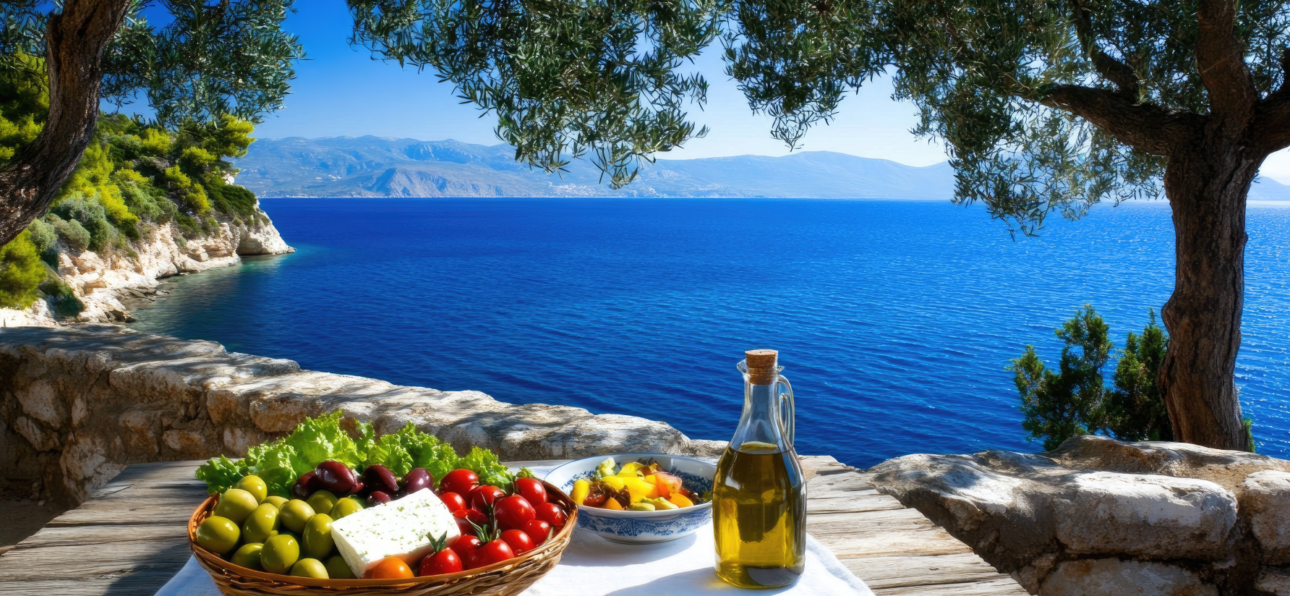In a world obsessed with diet trends and longevity hacks, there exist remarkable pockets of humanity where people routinely live to 100 years and beyond—not just surviving, but thriving with vitality well into their tenth decade. These regions, known as “Blue Zones,” have captured the attention of researchers, nutritionists, and health enthusiasts alike for their extraordinary concentration of centenarians and the apparent absence of many chronic diseases that plague modern society.
What Are Blue Zones?
The term “Blue Zones” was first coined by Dan Buettner, a National Geographic explorer and author who, along with demographers and researchers, identified five specific regions around the world with the highest concentrations of centenarians:
- Okinawa, Japan: An island where elderly residents maintain active social lives and purpose.
- Sardinia, Italy: Particularly the Nuoro province, home to the world’s highest concentration of male centenarians.
- Nicoya Peninsula, Costa Rica: Where residents enjoy strong social networks and a purposeful outlook on life.
- Ikaria, Greece: An Aegean island where people seemingly “forget to die.”
- Loma Linda, California: A community of Seventh-day Adventists in the United States who live approximately a decade longer than their North American counterparts.
What makes these zones truly remarkable isn’t just the impressive lifespan of their inhabitants, but the quality of those extended years. Blue Zone centenarians typically experience significantly less chronic disease, remaining active, engaged, and independent well into advanced age.
The Blue Zone Diet: Common Patterns
While each Blue Zone features its own unique cultural context and specific foods, researchers have identified striking dietary commonalities that appear to contribute to extraordinary longevity:
Plant-Centric Approach
Across all Blue Zones, diets are overwhelmingly plant-based. Approximately 95-100% of daily food intake comes from plant sources. Meat, particularly red meat, is consumed sparingly—typically just five times per month and in small portions of about 2 ounces.
“The cornerstone of every longevity diet in the world is beans,” Buettner notes. Indeed, legumes—including fava beans, black beans, soy, and lentils—feature prominently in all Blue Zone diets, consumed at a rate of at least half a cup daily. Which is why we love lupin so much!
Whole Foods Focus
Blue Zone inhabitants eat food in its most natural, least processed form. Their diets lack the ultra-processed foods that dominate Western nutrition. Instead, they consume seasonal fruits and vegetables, whole grains, and nuts—foods that human bodies have evolved to digest efficiently.
Moderate Caloric Intake
People in Blue Zones typically practice some form of caloric moderation, though not through deliberate restriction. In Okinawa, for instance, there’s a cultural practice called “hara hachi bu”—eating until you’re 80% full rather than completely satiated, which naturally limits overconsumption.
Specific Regional Patterns
Each Blue Zone features distinctive dietary elements:
- Okinawans traditionally consume sweet potatoes as their dietary staple, along with a variety of vegetables and small amounts of fish. Their traditional diet is notably low in calories yet nutritionally dense.
- Sardinians eat a Mediterranean diet rich in whole-grain bread, beans, garden vegetables, fruits, and olive oil. They also regularly consume Cannonau wine, a local variety particularly rich in antioxidants.
- Nicoyans center their diet around the “three sisters” of Mesoamerican agriculture: corn, beans, and squash, supplemented with tropical fruits and moderate protein from eggs and dairy.
- Ikarians follow a variation of the Mediterranean diet abundant in olive oil, wild greens (containing ten times the polyphenols found in green tea), potatoes, goat’s milk, honey, legumes, and small amounts of fish.
- Loma Linda Adventists practice a biblical diet emphasizing grains, fruits, nuts, and vegetables. Many are vegetarians, and those who eat meat do so sparingly.
Why Blue Zone Diets Work: The Science
The effectiveness of Blue Zone dietary patterns appears to stem from several scientific principles:
Anti-Inflammatory Properties
Blue Zone diets are naturally anti-inflammatory due to their abundance of antioxidants, polyphenols, and omega-3 fatty acids. Chronic inflammation is increasingly recognized as a root cause of many age-related diseases, including cardiovascular disease, diabetes, and certain cancers.
Optimal Gut Microbiome Support
The high fiber content from diverse plant sources nourishes beneficial gut bacteria, which research increasingly links to improved immunity, metabolic health, and even cognitive function. The fermented foods common in several Blue Zones (like Okinawan natto or Ikarian sourdough bread) further enhance gut health.
Hormetic Effects
Many plants consumed in Blue Zones contain mild toxins that trigger hormesis—a beneficial stress response in the body that strengthens cellular resilience. Essentially, the slight stress induced by these compounds activates protective pathways, similar to how exercise creates beneficial adaptation.
Low-Glycemic Impact
Blue Zone diets naturally avoid sharp blood sugar spikes and crashes. Slow-burning complex carbohydrates from whole grains, beans, and vegetables provide steady energy throughout the day rather than triggering insulin surges that can contribute to metabolic syndrome and diabetes.
Beyond Diet: The Blue Zone Lifestyle
While diet plays a crucial role in Blue Zone longevity, researchers emphasize that food represents just one element of a broader lifestyle pattern. Other critical factors include:
- Natural Movement: Blue Zone residents incorporate physical activity naturally throughout their day rather than through dedicated exercise sessions.
- Purpose: Having a reason to wake up each morning—what Okinawans call “ikigai” and Nicoyans call “plan de vida”—appears to add years to life expectancy.
- Stress Reduction: All Blue Zones practice regular stress-relieving activities, whether prayer, napping, happy hour, or ancestor remembrance.
- Community: Strong social connections and family ties provide emotional support and reinforce healthy behaviors.
- Moderate Alcohol Consumption: With the exception of Adventists, Blue Zone inhabitants typically enjoy 1-2 glasses of wine daily, often with meals and in social settings.
Implementing Blue Zone Wisdom
Adopting a Blue Zone approach doesn’t necessarily mean a radical dietary overhaul. Consider these practical strategies:
- Increase plant consumption: Aim to make plants 95% of your food intake by volume.
- Make beans a daily staple: Incorporate at least 1/2 cup of beans or legumes daily.
- Reduce meat consumption: Limit meat to small portions a few times monthly.
- Choose whole foods: Avoid products with more than five ingredients or ingredients you can’t pronounce.
- Find your own “holy plant”: Each Blue Zone has culturally significant, nutrient-dense plants they consume regularly (like wild greens in Ikaria or turmeric in Okinawa).
Conclusion
The Blue Zone phenomenon reminds us that exceptional longevity isn’t achieved through supplements, superfoods, or medical interventions, but through consistent lifestyle patterns established over decades. Their dietary wisdom—eating predominantly plant-based, whole foods in moderate amounts, within supportive social contexts—offers a compelling alternative to the constant cycle of dietary trends.
What makes Blue Zone diets particularly noteworthy is their sustainability. Unlike restrictive regimens that few can maintain long-term, these eating patterns have been culturally reinforced for generations. They offer not just longevity but a blueprint for living well throughout one’s entire lifespan—providing optimal nourishment while remaining deeply connected to cultural heritage, social bonds, and the simple pleasure of eating delicious, life-sustaining food.
As modern nutrition science increasingly validates traditional wisdom, the Blue Zones stand as living laboratories demonstrating that the path to longer, healthier lives may be more accessible—and more delicious—than we ever imagined.








